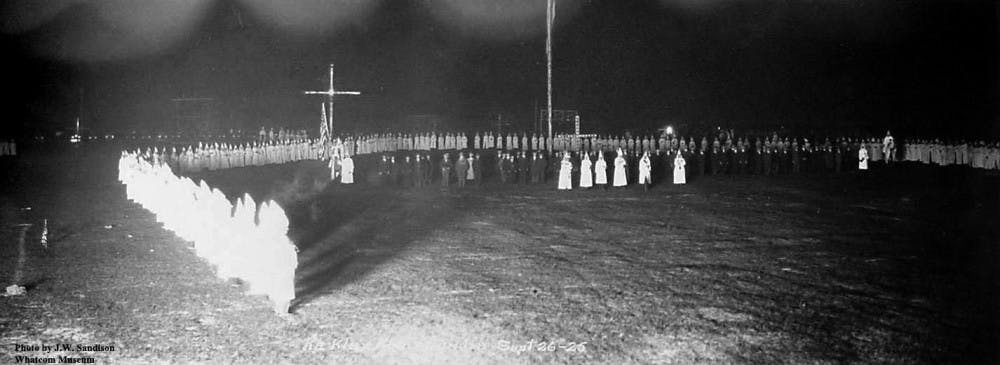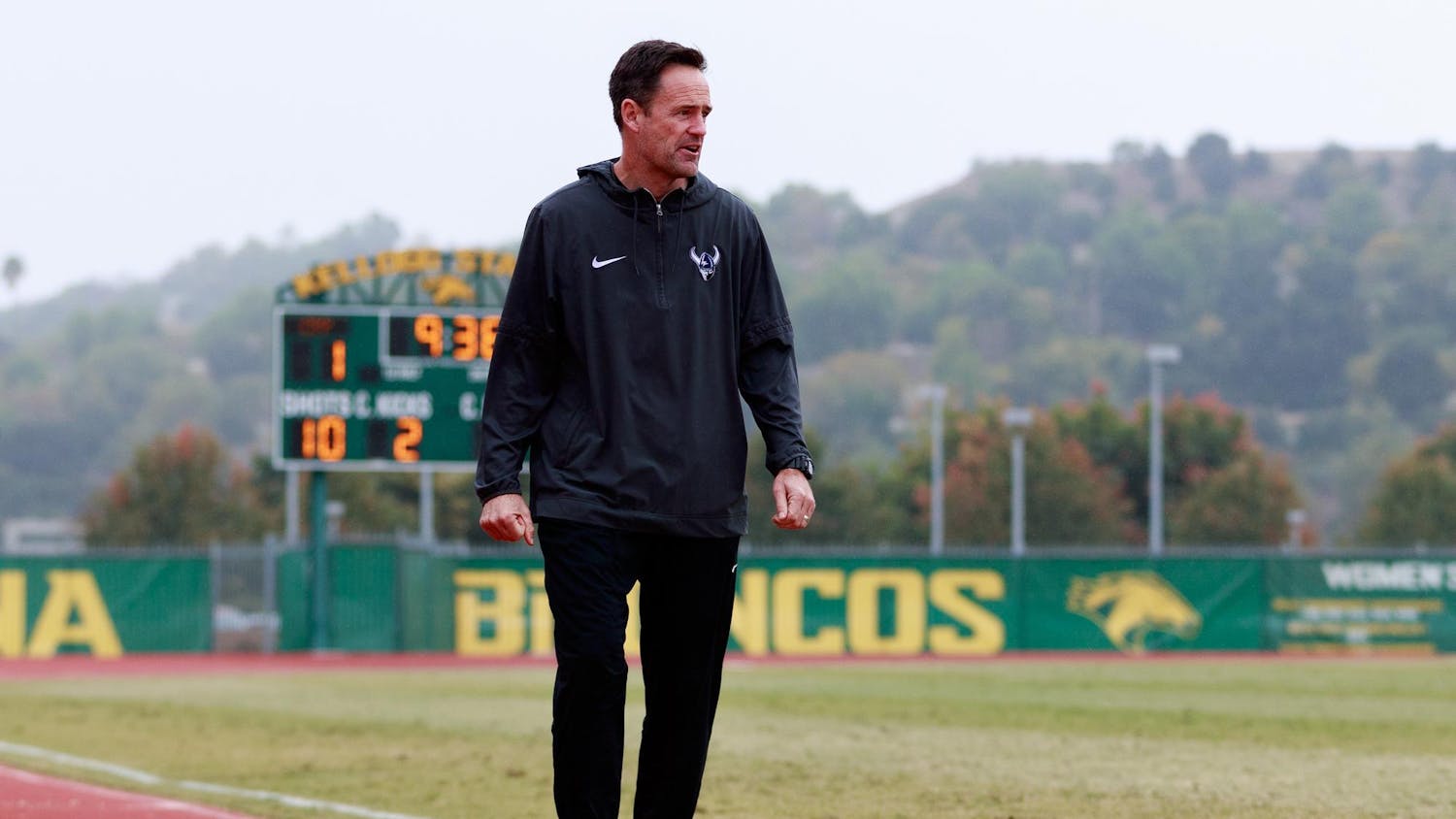The KKK is a white nationalist hate group with a long history in the United States. First founded in 1866 after the Civil War, it started as a way for racist white southerners to resist African American freedom. But in the early 20th century, the Klan gained more traction in Northern states.
Western history professor Jennifer Seltz said the KKK was more broadly anti-Catholic, antisemitic and anti-immigrant here in Bellingham.
“Its politics was standing up for the idea of white, protestant, native Americanism,” Seltz said.
Many historians consider the Klan to have come in three waves.

The organization spread out from the South during the 1920s after the Civil War and before the Civil Rights Movement. This is known as the second wave.
Groups occupied small pockets in the Midwest and Pacific Northwest and managed to temporarily gain a strong following, with their numbers rising substantially across the nation.
With a rise in membership came an increase in violence and chaos in many areas of the country.
“The crimes committed in the name of its bigoted beliefs were despicable — hangings, floggings, mutilations, tarring and featherings, kidnappings, brandings by acid, along with a new intimidation tactic, cross-burnings. The Klan had become a clear threat to public safety and order,” according to the FBI archives website.
Although the Klan was short-lived in Bellingham, they were a fixture in the community. Members met regularly and had their headquarters downtown on what is now Holly Street, according to an archived city directory.
Cross burnings by the Klan were documented in Lynden by photographer J.W. Sandison in 1926, and crosses were seen burning on Sehome Hill just above campus on July 11, 1924, according to a report by The Bellingham Herald at the time.
“No definite reasoning for the demonstration was given today, but the general assumption was that it was an advertising device by a well-known secret organization,” The Bellingham Herald wrote of the cross burnings.
KKK Tulip Parade, 1926The Klan wasn’t so much of a secret it seems, by the way it held parades.
On May 15, 1926, the day of the Tulip Parade in Bellingham, the Klan held a parade in the evening. They initially tried to enter a float in the Tulip Parade, but the idea was contested during a meeting of the tulip festival planning committee and the Klan decided to hold their own, according to an article by The Bellingham Herald.
More than 700 participants marched through downtown with the Klan. Openly resistant toward the Catholic community, they purposefully planned their path in order to pass the Assumption Catholic Church and cause fear, said Jeff Jewell, photo archives research technician at Whatcom Museum.

By the end of the 1920s, the Bellingham Klan was thriving enough that it gained regional recognition. The first convention of the Knights of the Ku Klux Klan of Washington was held here in 1929, according to an article by The Bellingham Herald.
The first day of the convention was attended by at least 300 members from across the state.
“City Attorney, Charles B. Sampley, a prominent Klansman, was sitting in the audience and had just passed up to the front, hailed like a conquering hero, all of which aduration he accepted with a smile and the wave of a hand,” The Bellingham Herald article said.
At the convention, a key to the city was given to the Grand Dragon of the KKK from Spokane, E.B Quackenbush, by the mayor of Bellingham, John Kellogg.

J.J. Donovan, whose name you may recognize as half of Bloedel-Donovan Park, was a well known voice in the Bellingham community.
He was also a Catholic and an outspoken critic of the Klan.
In July 1923, Donovan gave a speech to the Catholic Federation, telling them about the evils of the Klan and it was widely publicized, according to Donavan’s personal papers now at the Center for Pacific Northwest Studies.
“The Ku Klux Klan is founded on hatred, falsehood, selfishness, and bigotry,” he said in the address.
Donovan called out the Klan for not only being a hate group, but also being an organization that was trying to gain financial and political power in the area.
“It is a devil’s broth of cheap politicians, discredited preachers, ignorant dupes and cunning money grabbers,” he said.

The public displays of the Klan in Bellingham are less documented after 1930. Soon after the convention, their membership seems to have faded. However, a Klan official was involved in ousting Western President Charles Fisher in the mid-1930s, according to a study by journalism instructor Ron Judd.
It is not known how former Klan members spent their time after the Bellingham organization faded, but this doesn’t mean that their beliefs of bigotry and white supremacy went away.
Seltz said that members could have joined another white supremacist group that later cropped up in the area, called the Silver Legion. It’s also possible that they just grew quiet about these beliefs, she said.
Nationally, the Klan movement was revitalized during the Civil Rights Movements in the 1950s and ‘60s. The Klan resisted the idea of equal rights for African Americans, such as desegregated public schools.
The Klan was brought back into public view recently, during the 2016 presidential election, when the organization’s Grand Dragon and newspaper were open about their support of Donald Trump.
Check back next week for a look at white supremacy in Whatcom County after the KKK.





